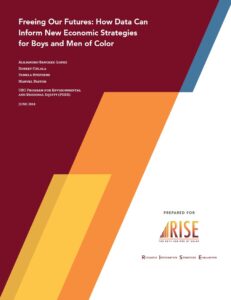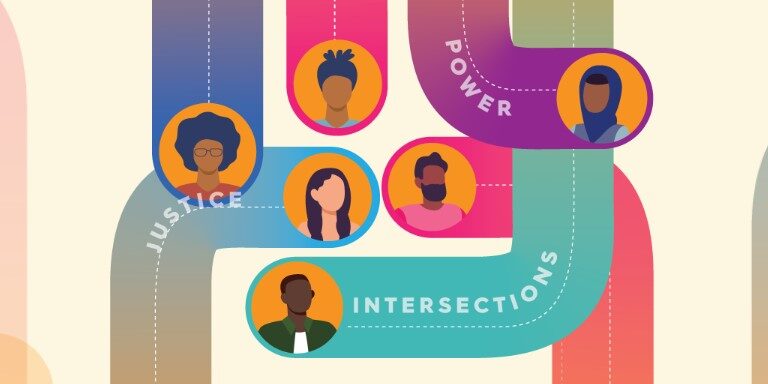By Alejandro Sanchez-Lopez, Robert Chlala, Pamela Stephens, and Manuel Pastor
June 2018
Young men of color represent the future of the United States: between 2010 and 2050, the population of young men of color (ages 10-24) is expected to increase by 5.5 million people – spurred by Latino, Asian American/Pacific Islander (AAPI), and other young men – while the white young male population will decline by 3.6 million. But boys and young men of color face alarming educational, employment, and health outcomes – not to mention bear the brunt of mass incarceration. Good jobs, healthcare, college degrees, and even more so, generational wealth and entrepreneurial success – all seem out of reach for so many young men of color and their communities. Initiatives like My Brother’s Keeper and deeply-rooted, but often less-visible grassroots movements throughout the US have sought to address these realities. How can data and research help inform approaches that recognize the barriers faced by but also vital capacities of boys and young men of color – and their complexities and diversity?
PERE’s Freeing Our Futures report, published by RISE for Boys and Men of Color, analyzes education and employment patterns among boys and young men of color and the disconnections and disruptions that occur between the two. Education and employment data provide a broad sense of the present conditions faced by young men of color and a glimpse into their prospects in a demographically and economically changing U.S. Taking a disaggregated look at standard workforce indicators like educational attainment, unemployment, and ‘disconnected’ youth allows for a deeper contextualization of the life outcomes for young men of color. Integrating interviews with workforce and education providers and organizers helps identify where current solutions are faltering – and how we can build stronger pipelines and increase the power of these communities to direct their own futures.
Boys and men of color are a central part of the future workforce. Planning for a future where they can thrive in their careers requires understanding just who these men are. The data across various groups of young men of color suggests that the established “pipelines” to economic success in the United States often hide the systemic barriers and racial gaps that remain in place. Addressing the “diversity within the diversity” – that is, “disaggregating” the data – helps us to understand the difference among these experiences with racism and inequality even as we develop shared goals.
Planning for a freer future also means understanding that young men of color do not live siloed lives, and their struggles are connected to a host of other challenges. Perhaps most important, this means planning for their future requires supporting their relationships to families, friends, and future coworkers as well. These relationships can be critical to empowering boys and young men of color and their communities in actively making change. The magnitude of challenges ahead will require developing or scaling up long-term social programs through government, private, and nonprofit partnerships. Additionally, traditional unions and new organizing strategies can develop agency and autonomy for young men of color in and out of the workforce.
Moving from simply responding to unequal conditions to shaping the directions of markets and generating innovation may seem a daunting task. Yet, organizational leaders interviewed here, and many hundreds more around the country (often invisible to the public eye), are providing avenues to look toward and lessons on effective strategies that take seriously the value and capacity of young men of color.
We hope the data we have presented can play a role in this broader effort. Detailed empirical analysis is important for making the right diagnosis of problems, generating a clear profile of strengths, and devising effective solutions. Presented correctly, it can help create an atmosphere in which difference can be highlighted not to divide groups but to point to the specific needs that must be addressed under the banner of common goals. And among the most unifying of those goals is our very future as a nation.
This report was prepared for RISE (Research Integration Strategies Evaluation) for Boys and Men of Color. RISE is a field advancement effort that aims to better understand and strategically improve the lives, experiences, and outcomes of boys and men of color in the United States. RISE is a joint initiative co-led by Equal Measure and Penn GSE Center for the Study of Race and Equity in Education.
Support for this study was provided by a grant funded by:
The Atlantic Philanthropies, The Annie E. Casey Foundation, Marguerite Casey Foundation, WK Kellogg Foundation, and members of the Executives’ Alliance to Expand Opportunities for Boys and Men of Color. The conclusions and opinions expressed in this study are of the author(s) alone and do not necessarily represent the views of RISE for Boys and Men of Color or its funders.




